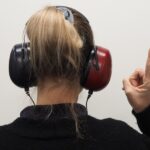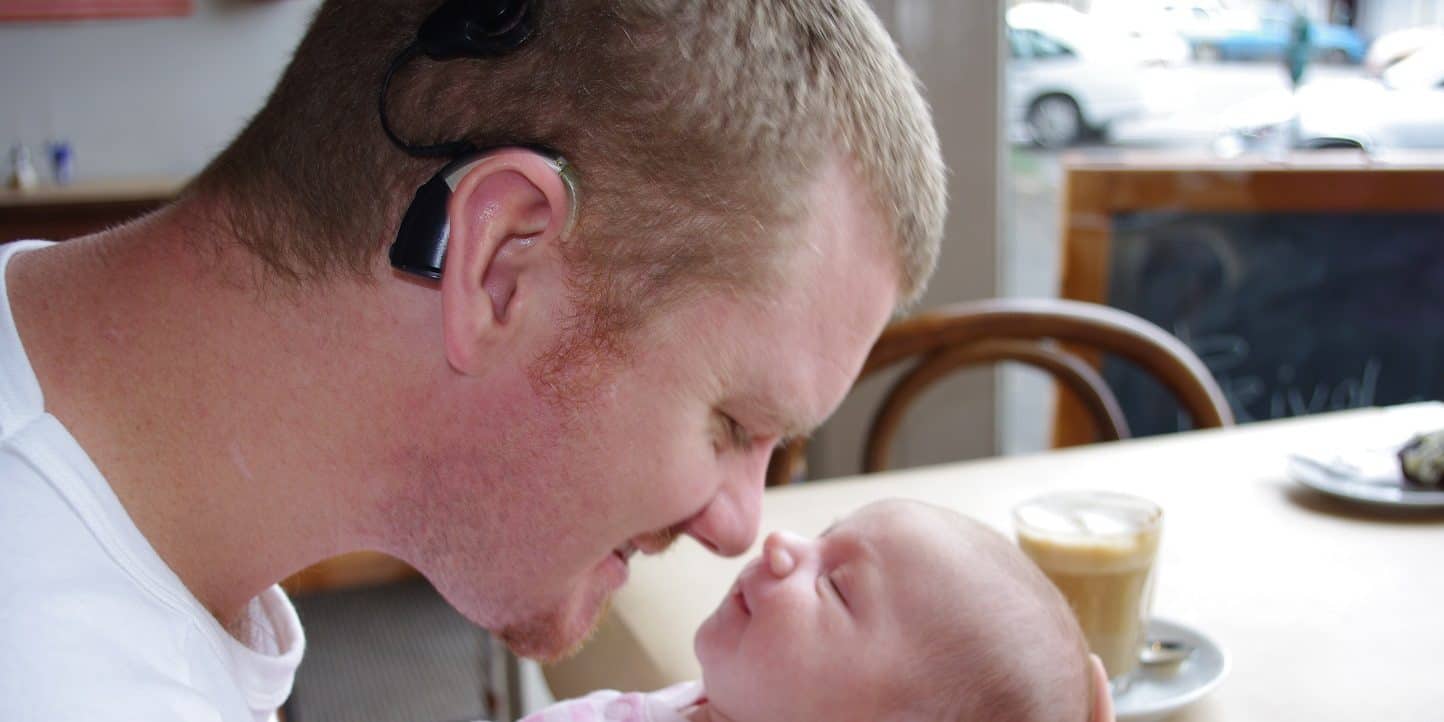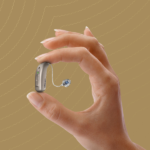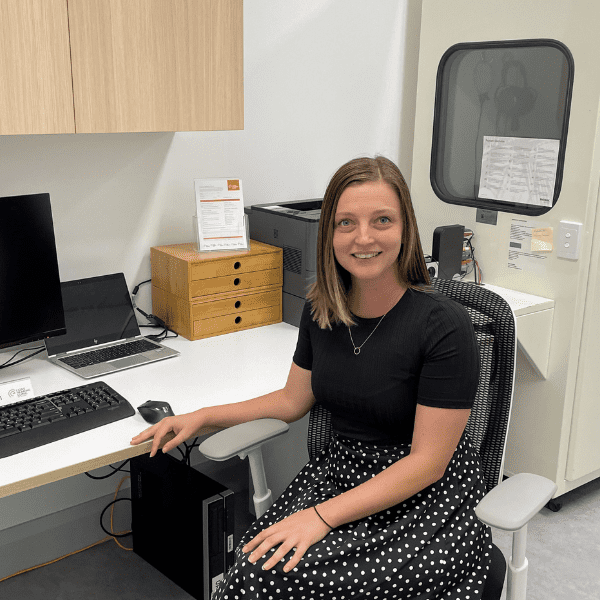Conductive hearing loss occurs when natural vibrations or sounds picked up at the outer or middle ear are blocked from reaching the inner ear (cochlea).
Damage to the outer or middle ear caused by an illness, ear infections, or blockage are the most common causes of conductive hearing loss. For us to hear and interpret sounds, sound vibrations must reach the cochlea. Conductive hearing loss is common in adults and children and may only be temporary, depending on the cause.
Conductive Hearing Loss Symptoms
Muffled speech and difficulty hearing, especially in excessive background noise are the most common symptoms. The feeling of blocked ears is also commonly reported. Individuals who have conductive hearing loss tend to describe it as feeling like they are wearing earplugs. Sounds can still be heard, but they are muffled. People, especially children, tend to perceive people talking clearly as mumbling, and even their own voice will typically sound very different.
Conductive Hearing Loss Testing
To diagnose conductive hearing loss, an individual would need to undergo a hearing test performed by an experienced professional. At many of our Ear Science Institute Lions Hearing Clinics, highly trained audiologists provide hearing assessments to diagnose conductive hearing loss in both children and adults.
Obtaining your audiogram (or hearing results) is a straightforward process that is entirely safe and suitable for young children. An audiogram identifies the quietest tone your child can pick up and at what frequencies they can interpret sounds. Audiograms measure air conduction as well as bone conduction thresholds. If an individual displays hearing loss in air conduction tests but maintains normal bone conduction hearing thresholds, this is indicative of a conductive hearing loss.
Conductive Hearing Loss Causes
There are many causes of conductive hearing loss. Regarding newborns and congenital conductive hearing loss, this is often caused by developmental issues.
Microtia | occurs when the outer ear does not fully develop.
Aural Atresia | occurs with the absence or closure of the ear canal, and can also involve malformation of the middle ear bones.
Abnormal Facial Bone Development | occurs when craniofacial bones do not form correctly during development.
For older children and adults, the causes of conductive hearing loss range from mild infections to severe diseases. These issues may not always cause permanent conductive hearing loss, and relief can often be found with treatment.
Ear Infections| infections in the ear canal (otitis externa) and infections in the middle ear (otitis media, or otitis media with effusion).
Damaged Ossicles| this occurs when there is damage to the tiny bones in the inner ear that pass sound vibrations from the ear drum to the cochlea.
Stenosis| occurs when the ear canal has narrowed and is much thinner than it should be.
Otosclerosis | occurs when there is abnormal bone growth in the middle ear that impedes hearing.
Ear wax Build-Up | sometimes referred to as wax impaction, consistent earwax (cerumen) build-up can eventually lead to a temporary conductive hearing loss.
Tumour| benign tumours can sometimes grow in the ear canal and block the functioning of the outer or middle ear.
Perforated Eardrum | also called tympanic membrane perforation, a hole in the eardrum that prevents sound vibrations from being able to reach the inner ear.
Fluid Build-Up in the Middle Ear | this can occur from eustachian tube dysfunction or even from mucous build-up during a cold. The fluid impedes sound vibrations from passing through the middle ear system and affects how the individual perceives sound.
Conductive Hearing Loss Treatments
First, an experienced audiologist will offer a thorough examination of your ears and the surrounding structures using a variety of tests to determine whether you have conductive hearing loss. The results of the hearing assessment are summarised in an audiogram, which indicates the severity of the hearing loss. Further tests such as CT or MRI scans may also be recommended and arranged by the GP or ENT to determine the cause of the conductive hearing loss.
Depending on the determined cause, treatment can then be offered. For ear infections and specific illnesses, medication can be prescribed to alleviate the cause of the conductive hearing loss. Surgery may also be recommended if a blockage is causing hearing loss or for other issues such as damaged ossicles, benign tumours and perforated eardrums.
Surgery could also be recommended to fit the individual for a hearing implant. The most common hearing implant solution for conductive hearing loss is a bone conduction implant. An internal component is surgically implanted and works with an external sound processor placed behind the ear. The two parts connect and transmit vibrations directly to the hearing nerve.
Bone conduction hearing aids produce acoustic vibrations directly transmitted to the inner ear through the bones of the skull. These sounds bypass the outer and middle ear to overcome the conductive hearing loss. These types of hearing devices ensure that the ear canal is not obstructed. For those who are prone to ear infections, this dramatically reduces the risk of ear infections in comparison to traditional hearing aids, as the ear remains open and ventilated. When traditional hearing aids are worn, there is a mould or dome blocking the canal which can increase the risk of ear infections occurring due to the reduction in ventilation.
If you think you might be suffering from conductive hearing loss book an appointment at one of our Lions Hearing Clinics today. Our experienced team of audiologists and hearing professionals can diagnose the cause of your hearing loss and recommend the appropriate treatment.
You may be a candidate for a bone conduction implant to improve your hearing and quality of life if you are prone to outer and middle ear infections.
READ MORE | Types of Hearing Loss






